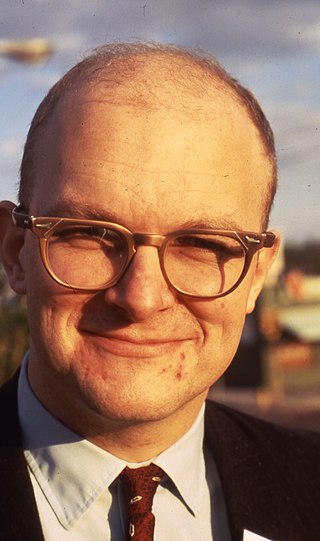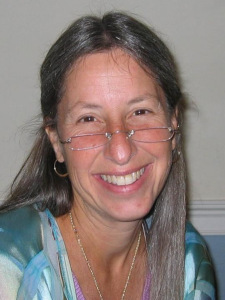Related Research Articles

The American Astronomical Society is an American society of professional astronomers and other interested individuals, headquartered in Washington, DC. The primary objective of the AAS is to promote the advancement of astronomy and closely related branches of science, while the secondary purpose includes enhancing astronomy education and providing a political voice for its members through lobbying and grassroots activities. Its current mission is to enhance and share humanity's scientific understanding of the universe as a diverse and inclusive astronomical community.

Vera Florence Cooper Rubin was an American astronomer who pioneered work on galaxy rotation rates. She uncovered the discrepancy between the predicted and observed angular motion of galaxies by studying galactic rotation curves. By identifying the galaxy rotation problem, her work provided evidence for the existence of dark matter. These results were later confirmed over subsequent decades.

Eleanor Margaret Burbidge, FRS (née Peachey; 12 August 1919 – 5 April 2020) was a British-American observational astronomer and astrophysicist. In the 1950s, she was one of the founders of stellar nucleosynthesis and was first author of the influential B2FH paper. During the 1960s and 1970s she worked on galaxy rotation curves and quasars, discovering the most distant astronomical object then known. In the 1980s and 1990s she helped develop and utilise the Faint Object Spectrograph on the Hubble Space Telescope. Burbidge was also well known for her work opposing discrimination against women in astronomy.

The Gold Medal of the Royal Astronomical Society is the highest award given by the Royal Astronomical Society (RAS). The RAS Council have "complete freedom as to the grounds on which it is awarded" and it can be awarded for any reason. Past awards have been given for "outstanding personal researches in the fields of astronomy and geophysics" as well as general contributions to astronomy and geophysics "that may be made through leadership in research programmes, through education and through scientific administration". It has been awarded both for research that has taken a lifetime, and for specific pieces of research.

Eugene Newman Parker was an American solar and plasma physicist. In the 1950s he proposed the existence of the solar wind and that the magnetic field in the outer Solar System would be in the shape of a Parker spiral, predictions that were later confirmed by spacecraft measurements. In 1987, Parker proposed the existence of nanoflares, a leading candidate to explain the coronal heating problem.

Alexei Vladimir "Alex" Filippenko is an American astrophysicist and professor of astronomy at the University of California, Berkeley. Filippenko graduated from Dos Pueblos High School in Goleta, California. He received a Bachelor of Arts in physics from the University of California, Santa Barbara in 1979 and a Ph.D. in astronomy from the California Institute of Technology in 1984, where he was a Hertz Foundation Fellow. He was a postdoctoral Miller Fellow at Berkeley from 1984 to 1986 and was appointed to Berkeley's faculty in 1986. In 1996 and 2005, he a Miller Research Professor, and he is currently a Senior Miller Fellow. His research focuses on supernovae and active galaxies at optical, ultraviolet, and near-infrared wavelengths, as well as on black holes, gamma-ray bursts, and the expansion of the Universe.
The Brouwer Award is awarded annually by the Division on Dynamical Astronomy of the American Astronomical Society for outstanding lifetime achievement in the field of dynamical astronomy. The prize is named for Dirk Brouwer.
The Chambliss Amateur Achievement Award is awarded by the American Astronomical Society for an achievement in astronomical research made by an amateur astronomer resident in North America. The prize is named after Carlson R. Chambliss of Kutztown University, who donated the funds to support the prize. The award will consist of a 224-gram (½-lb) silver medal and $1,000 cash.
The Division on Dynamical Astronomy (DDA) is a branch of the American Astronomical Society that focuses on the advancement of all aspects of dynamical astronomy, including celestial mechanics, solar system dynamics, stellar dynamics, as well as the dynamics of the interstellar medium and galactic dynamics, and coordination of such research with other branches of science. It awards the Brouwer Award every year, which was established to recognize outstanding contributions to the field of Dynamical Astronomy, including celestial mechanics, astrometry, geophysics, stellar systems, galactic and extra galactic dynamics. The Division also awards the Vera Rubin Early Career Prize for promise of continued excellence for an astronomer no more than 10 years beyond receipt of their doctorate.

Alar Toomre is an American astronomer and mathematician. He is a professor of applied mathematics at the Massachusetts Institute of Technology. Toomre's research is focused on the dynamics of galaxies. He is a 1984 MacArthur Fellow.
Joseph Burns is a professor at Cornell University with a dual appointment in the Sibley School of Mechanical and Aerospace Engineering (MAE) and the Astronomy department. His primary area of research is dynamics in planetary sciences.

Tracy Robyn Slatyer is a professor of particle physics with a concentration in theoretical astrophysics with tenure at MIT. She was a 2014 recipient of the Rossi Prize for gamma ray detection of Fermi bubbles, which are unexpected large structure in our galaxy. Her research also involves seeking explanations for dark matter and the gamma ray haze at the center of the Milky Way. In 2021, she was awarded a New Horizons in Physics Prize for "major contributions to particle astrophysics, from models of dark matter to the discovery of the "Fermi Bubbles."
Sarah T. Stewart-Mukhopadhyay is an American planetary scientist known for studying planet formation, planetary geology, and materials science. She is a professor at the University of California, Davis in the Earth and Planetary Sciences Department. She was a professor at Harvard University Department of Earth and Planetary Sciences from 2003 to 2014.

Vassiliki Kalogera is a Greek astrophysicist. She is a professor at Northwestern University and the director of the Center for Interdisciplinary Exploration and Research in Astrophysics (CIERA). She is a leading member of the LIGO Collaboration that observed gravitational waves in 2015.

Judith Sharn Young was an American physicist, astronomer, and educator. The American Physical Society honored Young with the first Maria Goeppert-Mayer Award for being the best young physicist in the world in 1986. Astronomer Nick Scoville of Caltech writes of her research: "Her pioneering galactic structure research included some of the earliest mapping of CO emission in galaxies followed by the most extensive surveys molecular gas and star formation in nearby galaxies."
Elizabeth Lada is an American astronomer whose self-described research interests include "understanding the origin, properties, evolution and fate of young embedded clusters within molecular clouds".
Rebekah Dawson is an American astrophysicist and an associate professor of astronomy and astrophysics at Pennsylvania State University. Her research focuses on simulating the evolution of exoplanetary orbits and compositions to better understand how planetary systems form.

Yoshihide Kozai was a Japanese astronomer specialising in celestial mechanics. He is best known for discovering, simultaneously with Michael Lidov, the Kozai mechanism, for which he received the Imperial Prize of the Japan Academy in 1979. He was the first Japanese president of the International Astronomical Union from 1988 to 1991, and was director of the National Astronomical Observatory of Japan from 1981 to 1994. He was professor emeritus at the University of Tokyo, National Astronomical Observatory of Japan and The Graduate University for Advanced Studies.
Jacqueline K. (Jackie) Faherty is an American astronomer specializing in infrared astronomy and the observation of nearby stars and brown dwarfs, and known for her public outreach in space science. She works at the American Museum of Natural History as a senior scientist in the museum's Department of Astrophysics and a senior education manager in the Department of Education.
References
- ↑ "Vera Rubin Early Career Prize". AAS. Retrieved 9 November 2019.
- ↑ "Past recipients of the Rubin Prize". AAS. Retrieved 9 November 2019.
- ↑ "Annual Meeting of the DDA: April15-19 in San Jose, CA". LPI. Retrieved 9 November 2019.
- ↑ University Communications (4 May 2018). "Awards & Accolades". University of Arizona. Retrieved 9 November 2019.
- ↑ A&S News (13 June 2019). "Astrophysics professor honoured with DDA's Vera Rubin Early Career Award". University of Toronto. Retrieved 9 November 2019.